The city of Okayama in Okayama Prefecture is about an hour from Kyoto and Osaka by shinkansen. Located next to the Seto Inland Sea, it has a history of industry. There’s easy transportation to the rest of the country, after all! What started as more traditional products such as tatami mats, indigo dying and boats have developed into more heavy industry of copper mining, iron, steel, and chemical plants.
And while I originally went solely for the castle and gardens (and easy jumping ground to other places), there are countless treasure troves of culture in the area to be found. Read on!
Okayama Castle: The second black crow
Okayama Castle (岡山城, Okayamajyou) main tower keep (tenshukaku, 天守閣), the symbolic shape known to Japanese castles, was originally finished in 1597. Have you read some of my other Japanese castle posts? Most of the castles were built around 1590-1605. So why do I call this the second black crow?
The black lacquer on the exterior walls of Okayama castle led to it being referred to as Crow Castle (烏城, U-jo). Not to be confused with Matsumoto Castle which is also known as crow castle with the exact same kanji but it’s pronounced 烏城, Karasu-jo. Because Japanese is fun. But also, Matsumoto is older so Okayama is the second we have today.
The current rendition was rebuilt in the 1960s and is part of the list of Japan’s top 100 castles but one of the turrets is original!
Korakuen Garden
Korakuen (後楽園) was what originally brought me to the city minus the fact that it is a great jumping ground to other prefectures, especially if you are trying to go to all 12 of the original castles of Japan – more on that in a bit. It is known as one of the 日本三名園 (Nihon Sanmeien) or “three famous gardens of Japan”, along with Kenrokuen in Kanazawa and Kairakuen in Mito.
The construction of Korakuen started in 1687 and wasn’t complete until 1700! Minus a few slight changes, it is the exact same as it was all those years ago. While there, definitely enjoy the views with a cup of green tea and wagashi (Japanese sweet) snack at the teahouse. You can see koi in the ponds and sometimes rare red-crested white cranes during events at the garden.
What’s with all the statues? Legend of Momotaro
When you leave the station, you might notice a statue of a boy surrounded by animals. It’s not the only one in the city if you keep your eyes open (don’t forget to look down for manhole covers with his image!). Things like this always intrigue me (there’s a lot of weird statues in Japan) so here’s the story! He comes from a Japanese fairytale called Momotaro (桃太郎) or “Peach Boy”. It tells the story of an old couple that found a baby boy enclosed in a peach floating down the river. As always, we are quite original with names in Japanese but you’ve got to admit ingenious on imagination!
As he gets older, he decides to go fight demons on Onigashima (Demon Island) and his now adopted mother prepares him some kibi-dango to eat. The original kanji was different and referred to the Kibi region that Okayama was apart of back in the day but nowadays 吉備団子 (kibi dango) is a specialty wagashi (Japanese sweet) of millet-flour dumplings that you can find in Okayama. He then ends up feeding that to a dog, a monkey, and a pheasant and they become friends.
Long story short, the animals help him defeat the demons and everyone is happy. As such, you’ll always see him with animals. The animals can be found in statues by themselves as well!
Fruits and Fruit Parfait in Okayama
With a story about a peach boy, you can imagine they might have peaches in the area? Okayama is one of the leading fruit regions of Japan. It’s famous for its Muscat grapes and peaches, as well as having melons and strawberries. You can go fruit picking at several local farms in the area.
What else can you do with fruit? Have fruit parfait! Perhaps my most favorite Japanese dessert (probably completely to do with the corn flakes that are some time mixed in), there are all sorts of parfaits to try in Okayama!
Other foods to try in Okayama
A few other foods of choice to try while you are in Okayama:
- Barazushi – This dish has been around in Okayama for several hundred years and is more of a sushi plate than what you would think of as nigiri or a roll. It’s similar to chirashi-zushi and is vinegar rice (sushi rice) covered with veggies and seafood. You’ll also see it called Matsuri sushi as it is commonly eaten during celebrations.
- If you are looking for fish, try mamakari (ままかり) which is a local delicacy from the Inland Sea.
Also keep your eye out for local beers!
Okayama is the best jumping ground
While there are some ferries sporadically around to get you to parts of Shikoku, Okayama station is the starting point for the train lines entering the island. It is also super pretty when you pass over the Seto Inland Sea! So if you are looking to get to Matsuyama Castle (my absolute favorite!), Kochi Castle (which also counts as one of the remaining palaces), Tokushima for Awa-odori, or the countless other things to do on Shikoku, it’s a great option to have some time planned in Okayama as well.
Looking to go west? It is also super easy to get to Tottori, Matsue and Iwakuni from Okayama. I’ve used Okayama several times as my “hub” to leave luggage and the like and go exploring from there.
Things to see in the surrounding area
You don’t need to go that far though to have a bountiful amount of sightseeing to accomplish!
- Bitchu-Matsuyama Castle – what I like to consider the hardest of the 12 original castles to get to!
- Bizen Pottery Museum, in Imbe, the hometown of 備前焼 (Bizen-yaki), one of Japan’s oldest forms of pottery with a history going back 1000 years. If the museum isn’t enough, there are plenty of galleries as well!
- Bizen Osafune Japanese Sword Museum – you can see sword making demonstrations!
- Fukiya Furusato Village – streets famous for their uniform red-colored buildings
- Kurashiki Bikan Historical Quarter – sightsee through traditional Edo architecture and take a boat ride down the canal
- Kojima Jeans Street – for those that love jeans, this is Japan’s birthplace for domestic product
- Old Shizutani School – oldest school in Japan for commoner’s
- Saidaiji Eyo Festival, also known as the Hadaka Festival, is famous nationwide as one of Japan’s three major festivals. An important intangible folk cultural property, in the middle of the night, in the middle of winter, thousands of men in mawashi (think loin clothes of the sumo wrestlers) battle over a tree to see who will be granted good luck. Check it out the third weekend in February.
- Saijo Inari Shrine – one of the top 3 inari shrines (or so they say since that’s somewhat contested)
Getting around Okayama
The easiest option if you don’t want to get your 10,000 steps in as quickly, is to take one of the two tram lines. It’s 400 yen for a day pass. If you are looking to get to the castle or garden from the train station, look for the Higashiyama Line and get off at the Shiroshita stop.
Getting to Okayama
You know me, I love trains and Okayama is a major stop on the San’yo Shinkansen. From Tokyo you can take the Nozomi line and reach Okayama in about 3.5 hours. If you are on the Japan Rail Pass, the Hikari makes the trip in 4.25 hours. Not much longer for saving money!
One thing that is still on my list of things to do is to take the Sunrise Seto/Sunrise Izumo which runs overnight from JR Tokyo Station and gets to Okayama first thing in the morning. You can get some floor space to wait out the night or you can get a room! If you have a Japan Rail Pass, the floor space won’t cost you anything but a room will run you about $100 USD. Which when you stay in business hotels for around $50 USD/night like me, it’s more for the experience than the cost savings!
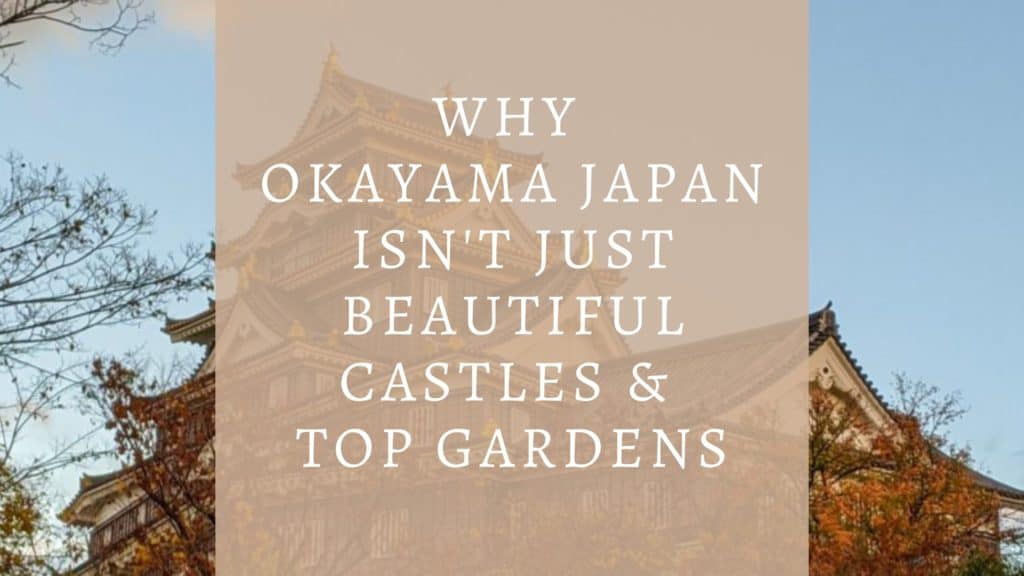
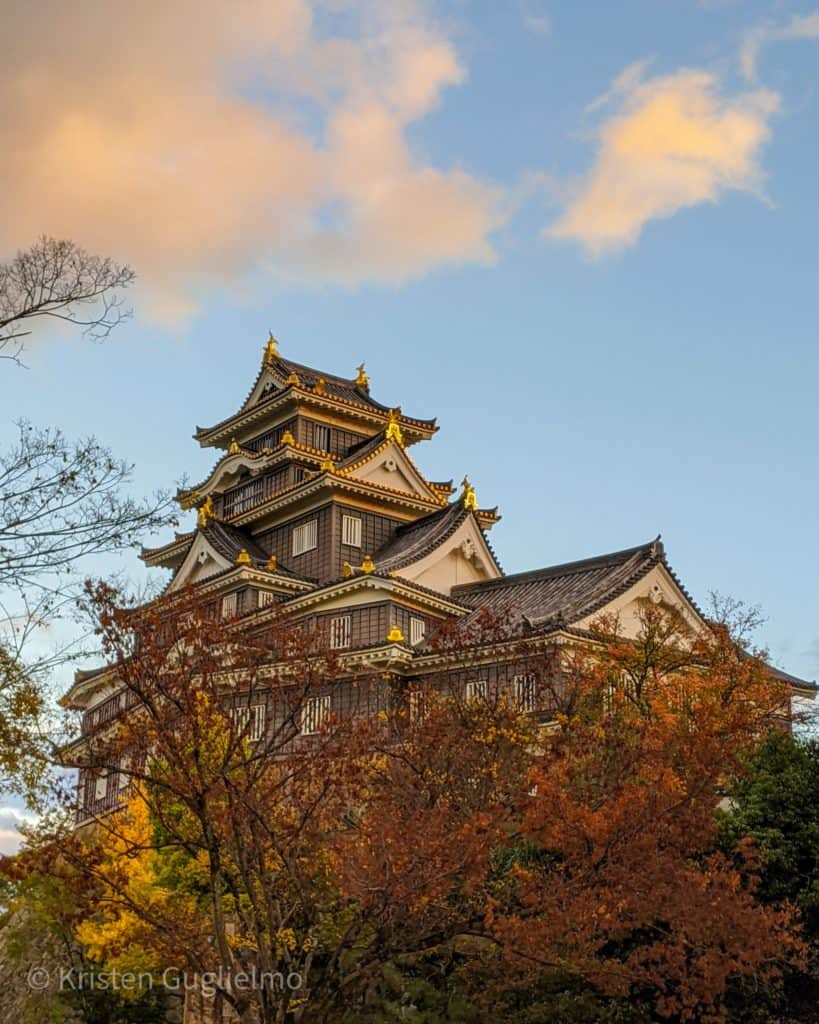
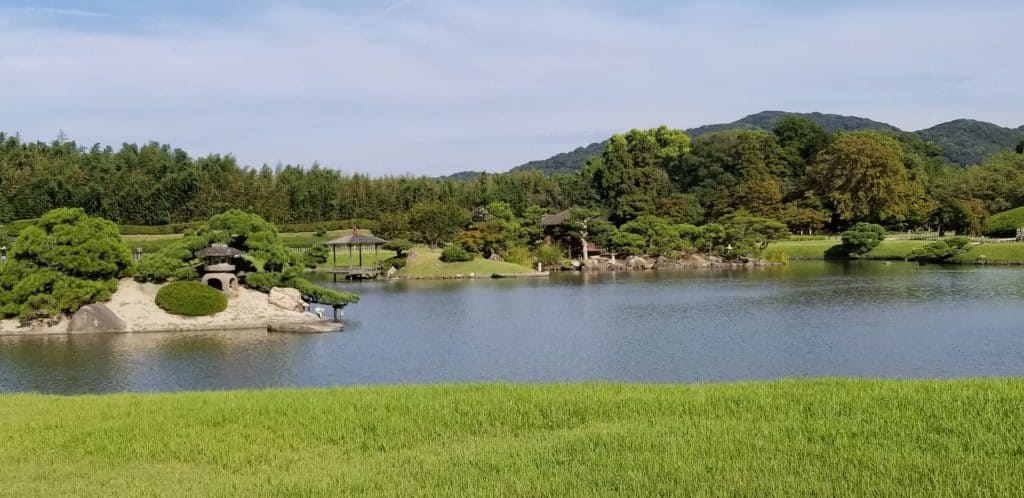
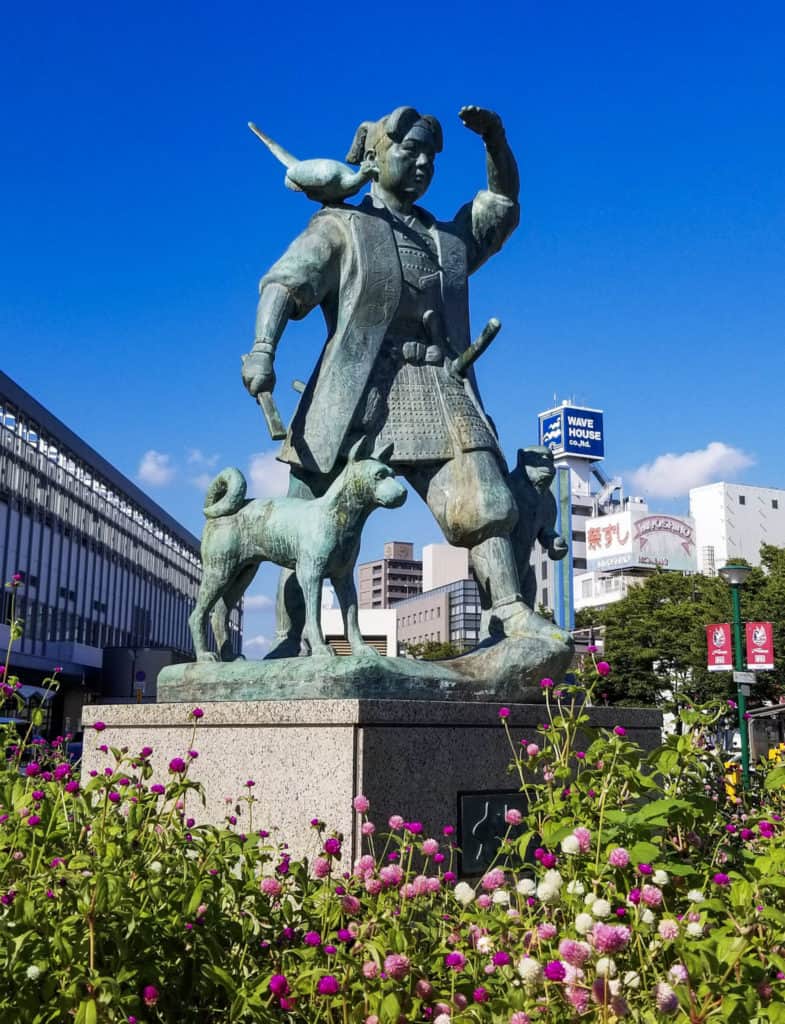
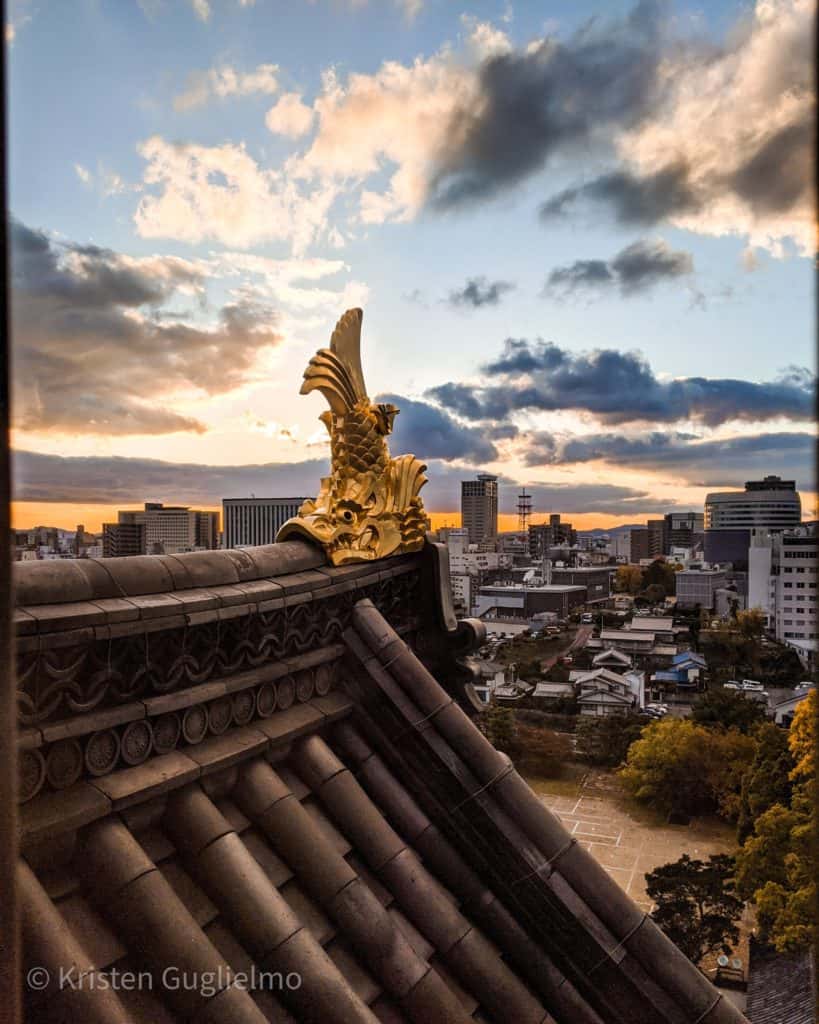
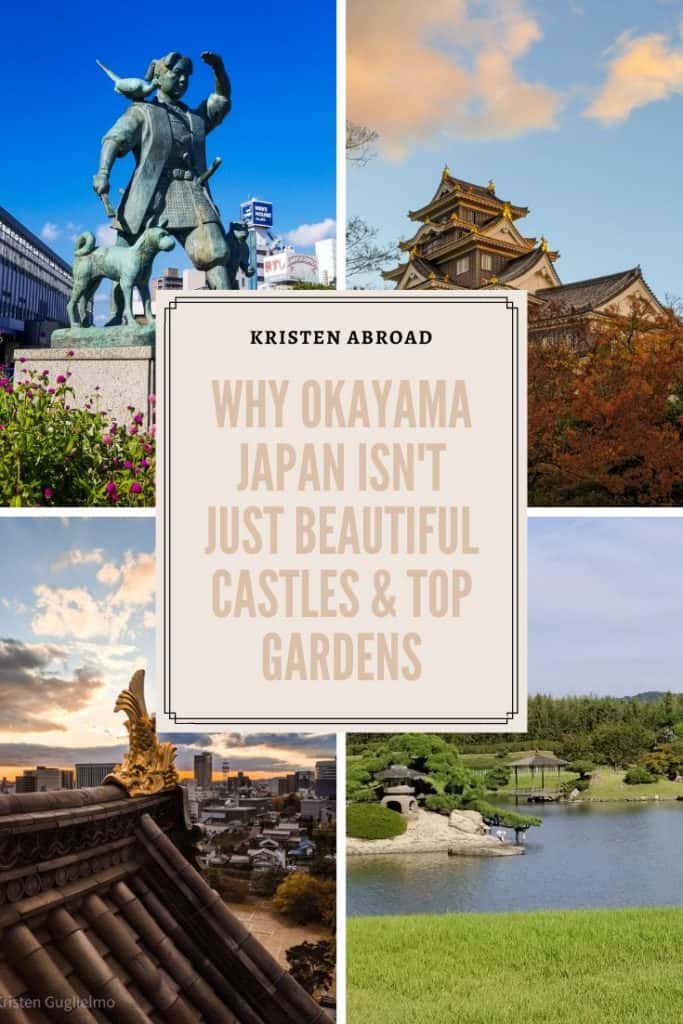
You make me want to visit Japan so badly. I mean, I’ve wanted to visit there for a while now, but seeing all of these beautiful pictures and hearing about all of the castles to visit, stories and the food to take in, I want to go even more. Okayama sounds like a fantastic place to visit with lots to explore and experience.
I’ve succeeded then 😉. There’s definitely so much to see! Let me know if you ever have any questions. I’m happy to help 😃.